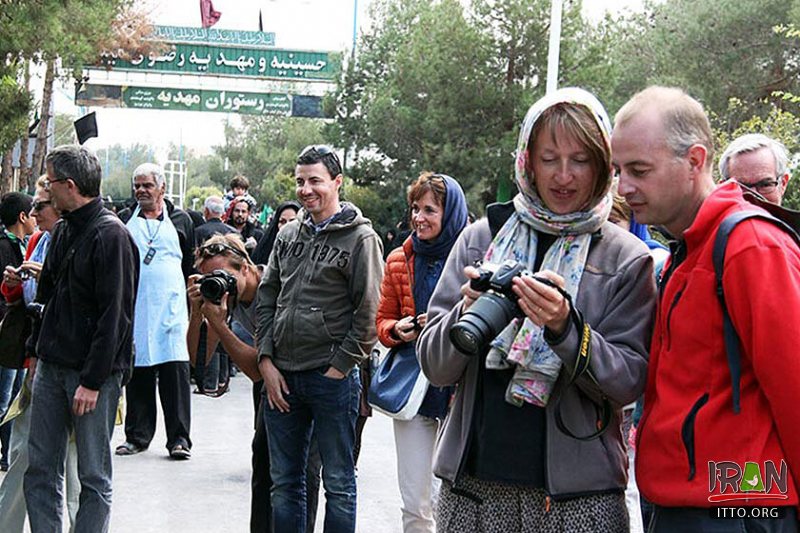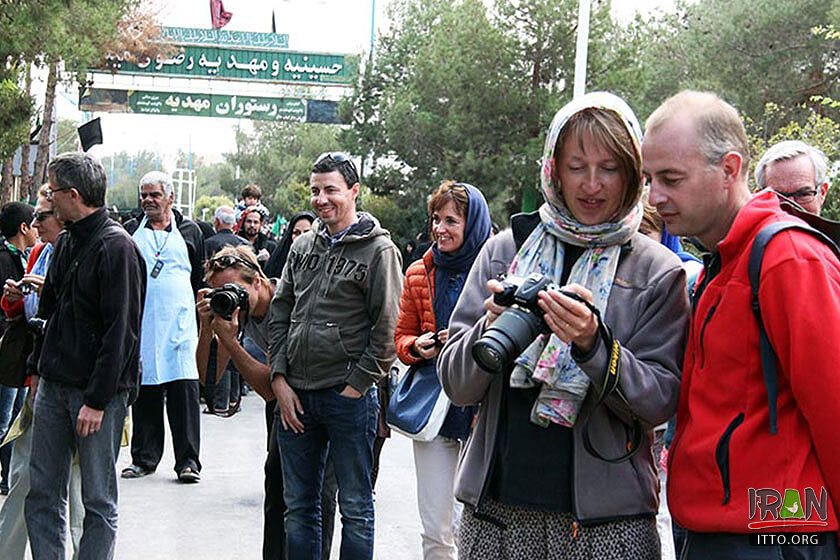Over the past couple of years, religious rituals have attracted more foreign travelers as spectators to Iran’s Yazd province. A total of 1,235 tourists from 22 countries attended religious services in Yazd during the past Iranian calendar year (ended March 20), showing a 39 percent growth year on year, head of a provincial committee for religious tourism said.
“Most tourists traveling to Iran are culturally-motivated and they usually have heard about [the country’s] religion and culture in advance,” Mohammad-Mehdi Rajaeifard said.
“Such travelers are typically interested in gaining further information on religious beliefs and cultural customs in the [host] community during their journeys,” Rajaeifard explained.
Foreign tourists, who are attending such rituals, could be regarded as Iran’s “cultural ambassadors” after returning home. They are able to change attitudes of other people towards Iranian culture and people.
Last year, spiritual tourism in Yazd, hosted people from France, Germany, Belgium, China, Turkey, Russia, the Netherlands, Brazil, Switzerland, Italy, New Zealand, Spain, the UK, the Czech Republic, Hungary, Slovenia, Japan, Taiwan, Hong Kong, Romania, Australia and Thailand, according to previous reports by provincial tourism department.
The sightseers attended various ceremonies such as Muharram commemorations, Tazieh (a passion play inspired by historical and religious narrations) and Sineh-Zani (beating the chest). They also conversed with people and religious figures while taking shots of mourners to document the events.
The number of foreign travelers visiting the central province surged 29 percent in the first four months of the current Iranian calendar year (started on March 21) from a year earlier, according to provincial tourism chief.
“A total of 51,718 foreign nationals toured the province during the four-month period, which shows a 29 percent growth year on year,” Homa Khorshidi said in August.
A majority of the visitors were from Italy, Germany, France, China and Spain, the official added.
In July 2017, historical structure of the city of Yazd, which is the capital of Yazd province, was named a UNESCO World Heritage. The oasis city is wedged between the northern Dasht-e Kavir and southern Dasht-e Lut on a flat plain ringed by mountains. Its historical structure enjoys a very harmonious public-religious architecture that dates from different eras.
The city of Yazd is usually referred to as a delightful place to stay, or a “don't miss” destination by almost all of its visitors. It is teemed with mudbrick houses that are equipped with innovative badgirs (wind catchers), atmospheric alleyways, and many Islamic and Iranian monuments that shape its eye-catching city landscape. The province has an interesting mix of people as well, some 10 percent of whom follow the ancient religion of Zoroastrianism.



